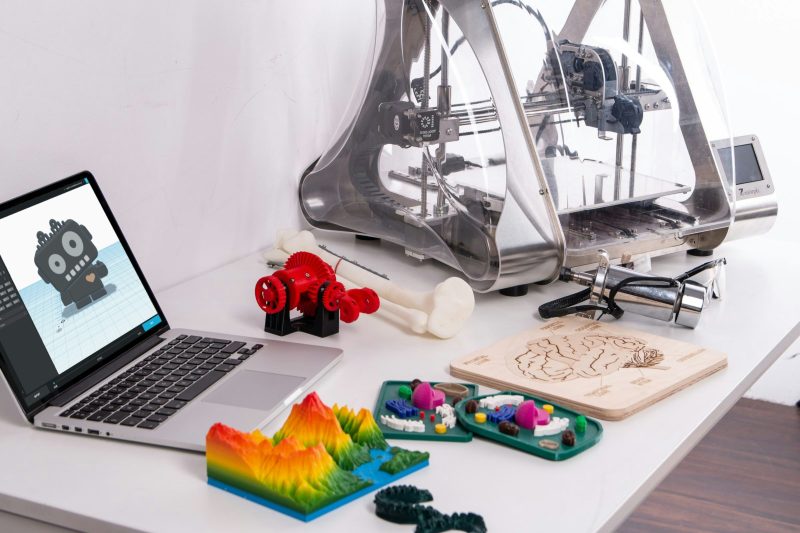Within modern fabrication, 3D printing has emerged as a revolutionary force, transforming how we conceive and create objects. While 3D printing is often associated with plastic or polymer prototypes, the technology has evolved, breaking new ground in the fabrication of metal objects. The guide below will explore the fascinating world of using a 3D printer to craft metal objects, unlocking endless possibilities for makers, engineers, and enthusiasts alike.
Understanding The Basics
Before delving into the intricate process of 3D printing with metal, it is crucial to grasp the fundamentals. Unlike traditional plastic filament, metal 3D printing involves metal powders, typically alloys like stainless steel, aluminium, or titanium. The printer deposits thin layers of these metal powders, which are then fused using a high-energy source, such as a laser or an electron beam.
Choosing The Right Metal
Selecting the appropriate metal for your project is a pivotal step in the 3D printing process and one you want to get correct. Each metal has unique properties and characteristics that greatly influence the final product. Stainless steel, for example, is renowned for its durability and corrosion resistance, making it suitable for a wide array of applications. On the other hand, titanium boasts an exceptional strength-to-weight ratio, making it ideal for aerospace and medical applications.
Designing For Metal Printing
Designing for metal 3D printing requires a nuanced approach, and traditional CAD (Computer-Aided Design) software can be used, but you must consider certain factors. The design should accommodate the specificities of the chosen metal, such as thermal conductivity and shrinkage during the cooling process. Additionally, intricate geometries that may be challenging or impossible to achieve through traditional manufacturing methods become feasible with 3D printing.
Preparation & Calibration
Once the design is finalised, meticulous preparation and calibration are crucial for a successful print. The metal powder must be loaded into the printer’s chamber precisely, ensuring uniform distribution. Calibration of the printer’s settings, such as laser power and layer thickness, is paramount to achieving the final product’s desired quality and structural integrity.
Layer By Layer: The Printing Process
The 3D printing of metal objects follows a layer-by-layer approach, carefully depositing and fusing each layer. The high-energy source, whether a laser or an electron beam, selectively melts and solidifies the metal powder, creating a solid and cohesive structure. Patience is key during this process, as the printer builds up the object layer by layer until the final form emerges.
Post-Processing & Finishing Touches
Once the printing is complete, the metal object undergoes post-processing to enhance its properties and aesthetics. It may involve removing support structures that are temporary elements added during printing to support overhanging features. Heat treatments, machining, and surface finishing techniques are also employed to refine the final product, ensuring it meets the desired specifications and standards. You can also personalise the item by putting it in an engraving machine for metal and adding a message, pattern, or logo to the design.
Quality Control & Testing
Ensuring the quality and integrity of the printed metal object is paramount, and you will want to check it carefully when it is complete. Rigorous testing and quality control measures, such as non-destructive testing (NDT) techniques like X-ray or ultrasound, can identify potential defects or irregularities. This step is crucial, especially in industries where the reliability and safety of the final product are of utmost importance.
Applications & Industries
Metal 3D printing is highly versatile and has applications in many industries, as there are many uses for this fantastic technology. Using this technology can help reshape how we manufacture and conceptualise metal objects. You can use metal 3D printing to make medical implants, aerospace components, intricate jewellery, and automotive parts, to name but a few. The ability to create complex geometries and bespoke designs with precision has positioned metal 3D printing as a game-changer in the world of manufacturing.
Challenges & Its Future Prospects
While metal 3D printing has made remarkable strides, challenges still exist. For example, the cost of materials and machines and the need for highly skilled operators can be barriers to widespread adoption. However, as technology advances and becomes more accessible, these challenges are expected to diminish. The future holds exciting prospects for metal 3D printing, with ongoing research focusing on refining processes, expanding material options, and making the technology more affordable.
Harnessing the power of a 3D printer to craft metal objects opens a world of creative possibilities. The technology is reshaping the fabrication landscape from intricate designs to functional components. While the process may seem complex, precision, customisability, and versatility rewards are well worth the investment. As metal 3D printing continues to evolve, we can expect even greater innovation and a broader spectrum of applications, cementing its place as a transformative force in modern manufacturing. So, whether you are an engineer, a maker, or simply a curious enthusiast, it is time to explore the endless potential of 3D printing with metal.










